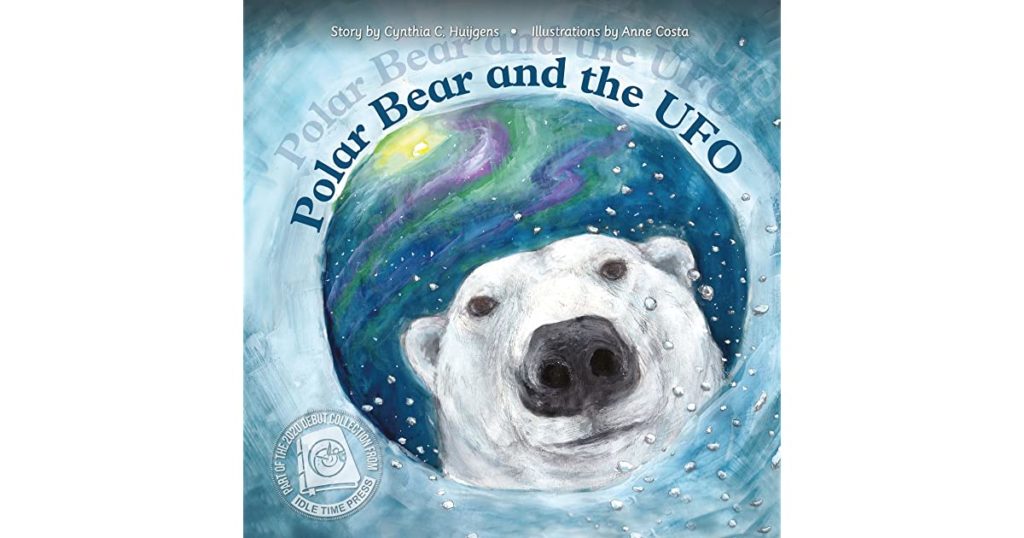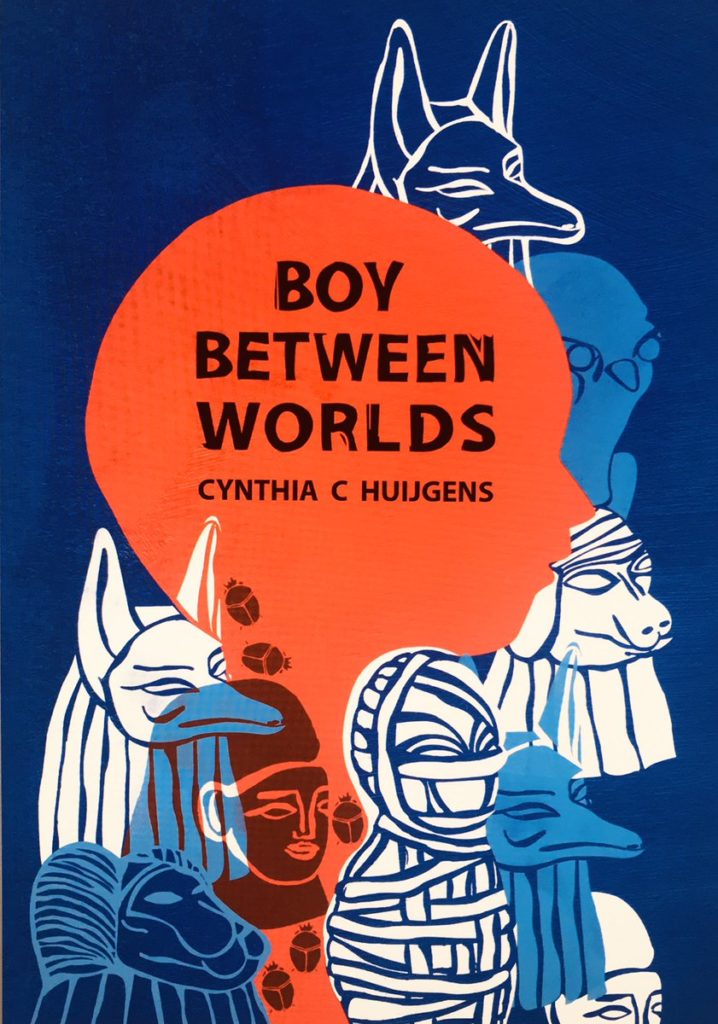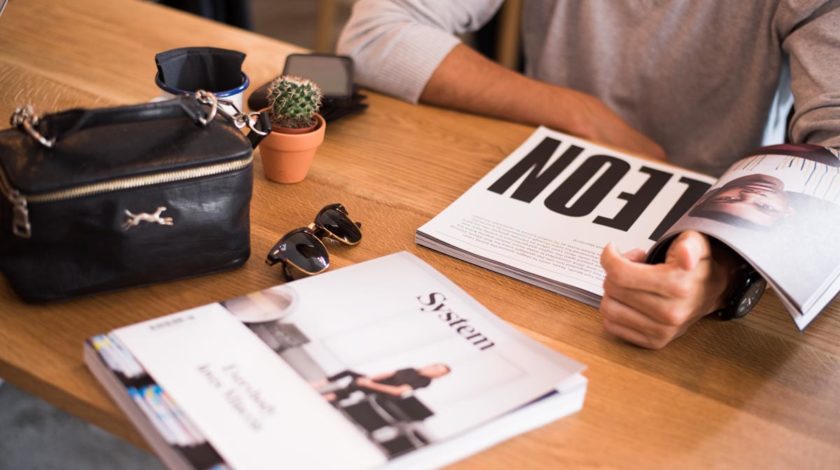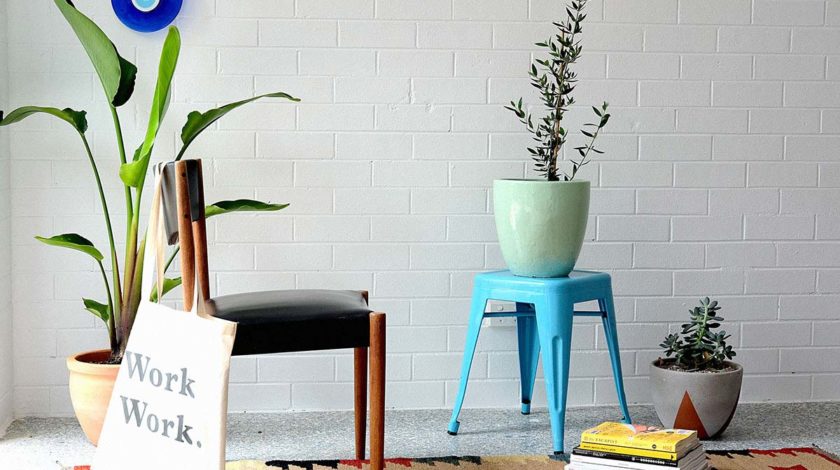This interview was conducted via email and Facetime conversations. The interviewer, Naomi Ulsted, is designated as NU; while Cynthia Huijgens is designated as CH.
NU: You have a new middle grade novel coming out. Can you talk a little about where your idea for Boy Between Worlds came from?
CH: The idea for Boy Between Worlds came to me while I was living in a suburb of Cairo, Egypt. The story takes place in Egypt and some of the characters, like Mr. Professor, are drawn from people I met there. Mr. Professor is a real person, but his real name shall remain a secret.
NU: In general, where do you pull your writing material from?
CH: From real life events, things that I witness or things that I experience myself. However, I wrote a picture book, The Polar Bear and the UFO, and although I’ve seen both a polar bear and a UFO, I haven’t actually seen them talking.

NU: Wait, what? I have to ask about the UFO
CH: Right, it was when I was a teenager. My girlfriend and I were outside at night at we saw all these crazy lights. We ran home and called the UFO hotline. We were on hold forever, but then when they answered and we told them what we’d seen, I remember feeling so surprised and validated about how seriously they took our experience.
NU: What an amazing experience. I saw a UFO once too, I think. But I guess I’ll never know for sure. Anyway, back to the picture book. How did you find your illustrator for The Polar Bear and the UFO?
CH: I found my amazing illustrator, Anne Costa, through the Society for Children’s Book Writers and Illustrators. I was at their conference and they were hosting a portfolio show of illustrators. I spent half a morning there, flagged around ten illustrators, and then conducted interviews that week. SCBWI had really provided me with some incredible connections.
NU: Let’s talk a bit about the writing process? How many revisions would you say Boy Between Worlds has had? Do you outline your books/stories ahead of time? If so, how detailed is your outline?

I began writing this novel, which I called The Novice Collector, with no outline. After two years of constant writing I realized I needed a way to organize my story. I read Save the Cat Writes a Novel, by Jessica Brody, based on the books by Blake Snyder, and that gave me a way forward. I enrolled in Simon Fraser University’s The Writer’s Studio and revised chapter after chapter with my mentor Eileen Cook and cohort. That was incredibly helpful and, by the time I graduated from the program, I realized that I had the second novel in my story. So, I went back to the beginning, this time with an outline, and wrote Boy Between Worlds: Secrets Inside The Cabinet of Curiosities. I plan to release The Novice Collector as the second book in the Boy Between Worlds trilogy.
NU: What is it about writing children’s literature that draws you in?
CH: When my youngest son was approaching 12-13 years old, he read the entire Pendragon series and everything written by Anthony Horowitz, Robert Muchamore, Susan Cooper, Darren Shan, Rick Riordan, you name it. And then one day he stopped reading. We couldn’t find a book he was interested in. He wasn’t ready for adult content, but had outgrown the stuff he’d been reading. At the time I thought, if I have the opportunity one day, I would like to write a book that he would have read during that in-between stage, the upper middle grade years. So that’s what I’m doing now, in addition to working on illustrated children’s books.
NU: Can you talk a bit about a couple of your favorite children’s books? Do you have a favorite contemporary children’s author?
CH: I am drawn to books with a human story. I still love books I read to my boys, like Hey Al, by Arthur Yorinks and illustrated by Richard Egielski, and anything by Shel Silverstein or Roald Dahl, and funny fairytale stuff like The Stinky Cheese Man! I like that there are so many options available to kids now with respect to diverse voices. Among my favourite contemporary writers are Renee Watson and Tanya Boteju, one of my SFU soulsisters.
NU: You recently served as the editor of an anthology, The Circle 19: A Brussels Anthology. Tell us a little about the process of putting together an anthology? What are the biggest rewards for you in this type of project?
CH: I had an amazing editorial team on The Circle 19, which made it all possible. I enjoyed working with the poets and writers to get their pieces print-ready. Probably my favourite part of the process was the creative aspect of putting together a book: selecting the cover art and text, font size, that sort of thing.
NU: You’ve talked about focusing annually on one major “community project?” Can you talk about what that means to you? What is your current community project?
CH: Every year, I choose to do one project that is more of a service – something I think benefits the writing community and the community in general. Last year, it was The Circle 19. I oversaw the process for submissions, editing, etc. There was no submission fee for writers and poets, but the quality needed to be high in their finished pieces. It’s a way of bringing in writers who haven’t been published, but also mixes their work with more seasoned writers and poets. It has a collegial mentoring feel of writers helping writers. T
The 2020 project is another anthology. This new project is targeted for a bit of a lower age range; poetry for 12-14 year olds. The judges are Canadian poet Carolyne Van der Meer, Mimi Kunz from Germany, Xavier Quiepo from Spain, and Jay Spinks from Belgium. The project will be available for a lower price to help get the material into people’s hands. I like focusing on and supporting local talent. Nobody gets paid; it’s just people doing things to be a part of the writing community. Unfortunately, we’ve just put the project on hold however, due to the uncertainty created by Covid-19, so it will likely be a 2021 publication.
NU: You travel quite a bit and have lived in several countries. How does travel affect your writing?
I don’t write about the experience of travelling so much as trying to work the experiences I have as a foreigner into my writing. The inability to communicate with someone in their own language means you have to rely on other things, like facial expressions and body gestures. These are things I pay attention to in my own characters, as well as how they dress and how others may interpret their ‘normal’ habits when they’re not in their ‘normal’ environment. I pay attention to details, especially tactile, and try to work that into my writing as well.
NU: What is one piece of advice you have for young writers?
Don’t be afraid to put your stories out into the world. There are millions and millions of readers eager to make a connection with your words. Find yourself a supportive writing group, like my own Brussels Writers’ Circle, and start sharing!
NU: Do you have advice about finding your people, and building a writing community?
CH: It’s almost like speed dating. Don’t get frustrated if you don’t find the right fit the first time. Sometimes it’s not a good fit and you try someone different. Sometimes you just find one person and then you need to find others. As writers we grow and develop and what we need at the beginning isn’t what we need later in our process. Sometimes we need a big group, and sometimes we need one or two writing or reading partners who you can take suggestions from. Just let yourself try out different situations, let yourself grow, and keep sharing those stories.




